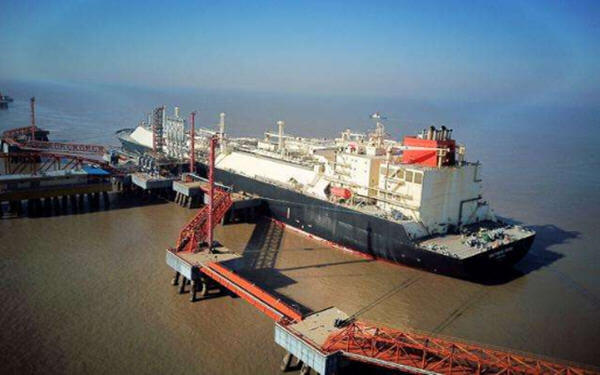
China is reshaping the liquefied natural gas market as Beijing’s promotion of the supercooled fuel for environmental reasons lifts demand outside of the usual winter peaks.
LNG prices normally spike in cold weather and fall in the spring, but Chinese buying has continued this year, with LNG imports for the first four months of 2018 up almost 60 per cent compared to the same period last year.
While part of that is down to a recovery in oil, to which many LNG contracts retain a pricing link, traders and analysts say that China’s new-found appetite for the fuel has forced a major rethink in an industry that just 12 months ago was fretting about a prolonged glut.
This spring the Asian LNG price is at the highest seasonal level since 2014. The Platts’ Japan-Korea marker is trading at $9.60 per million British thermal units, almost 80 per cent higher than it was the same time last year.
Prices for delivery further in the future have also been dragged higher, with China’s rapid emergence as a leading LNG buyer, echoing the country’s effect on other commodities in the past decade, when higher imports of iron ore, copper and oil sparked a multi-year rally in natural resources.
“Gas until now hasn’t had its China moment,” said Trevor Sikorski, head of natural gas and carbon at consultants Energy Aspects. “The China [buying] increases has the market saying ‘LNG is not going to be in massive over-supply. If we continue at this pace we will be facing a supply shortness’.”
The shift has reinvigorated an industry that just 12 months ago was warning of a supply glut lasting well into the next decade. That was before China overtook South Korea as the second-largest importer of the fuel last year, purchasing a total of 38m tonnes, up by almost 50 per cent from 2016.
New projects are being commissioned or approaching final investment decisions. A latest example is Malaysia’s Petronas, which this week said it would take an equity stake in Royal Dutch Shell’s Canadian liquefaction project, marking a turnround after it cancelled its own proposal in west Canada last year.
Beijing’s policy in 2017 to switch from coal to gas for both residential and industrial use boosted demand for LNG, pushing Asian prices to a three-year high last winter.
Recent trading volumes of LNG in Asia have also been supported by restocking of depleted inventories after a cold winter by South Korean and Japanese utilities.
“People have been tied up trying to capture the momentum [in the LNG market],” said Fiona Fagerlund, head of Atlantic LNG at Tullett Prebon brokers.
The higher Asian demand follows production outages in Papua New Guinea and Algeria, and delays in Australian projects originally expected to come online in the second quarter.
Output from these new projects are now forecast to come to the market later this year, increasing new output capacity by just under 30m tonnes, or 10 per cent in 2018, according to Energy Aspects.
However, while this will ease some of the tightness, analysts expect renewed winter purchases to push prices higher towards the end of the year,
“We are concerned about the winter. Prices could go up to oil parity,” said Massimo Di Odoardo, vice-president of global gas and LNG at Wood Mackenzie, the energy consultancy. LNG prices could reach $12 per m Btu in the northern hemisphere winter should oil prices remain at around $75 a barrel, he said.
The turn in sentiment has renewed interest in supply projects. Until recently, industry executives had worried that the slump in prices and lack of new projects would lead to a supply shortage in about 2021-22.
But Anadarko recently said it had reached its near-term target for buyer agreements to support its final investment decision in Mozambique, Total agreed to take a stake in Novatek’s new Siberian project, and Cheniere announced its decision to develop its third liquefaction unit at its Corpus Christi export terminal in Texas.
Source: FT.com